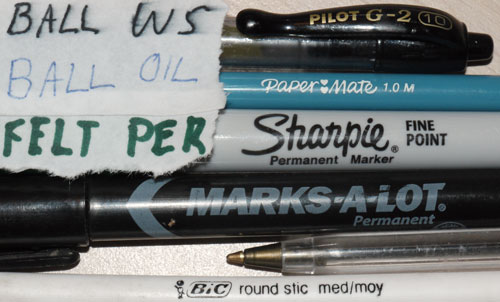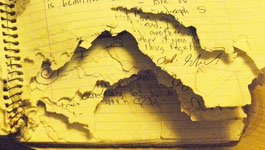 Rodent Damaged Notebook
Rodent Damaged NotebookProbably a rodent chewed away these pages to gather soft, insulating material for a nest. I have not noticed many food stains that would encourage eating of the notebooks. The books are usually stored in plastic bags, which are waterproof, but do not deter rodents. Some shelters have metal mailboxes, which are both water and rodent proof, but tend to collect random junk, and may lead to a messy shelter as people see the junk collection and contribute. Although a mailbox ought to restrict animals and falling water, there ought to be enough ventilation to allow wet books to dry, and drain holes if water can pool in the bottom. Holes might need to be drilled in stratigic spots.
Also note the dark Mildew Stain in the upper left corner.
 Deliberately Torn Book
Deliberately Torn BookSomeone has torn pages from the back of this stitched composition book for notes, fire starting, toilet duty, etcetera.
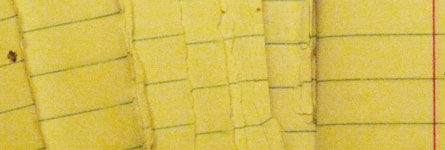 Deliberately Torn, Binding Disintegrating
Deliberately Torn, Binding DisintegratingHere, pages in the back were torn out all the way to the stitching of the binding. Many pages in the front are completely loose, with just a few holding on where the ripping in the back was not all the way to the binding.
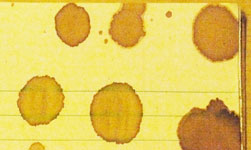 Stains
StainsIn a few cases, there is non-mildew droplet staining. Maybe the shown stains are from something like coffee, but there are also red or blue stains probably from ink.
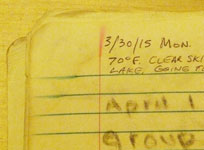
 Two Examples of the Printed Lines Dissolving Due to a Wet Book
Two Examples of the Printed Lines Dissolving Due to a Wet BookEven so, the pen ink was not water soluble and remained legible.
Note that "April 1 group" was written in charcoal. Perhaps all the pens were missing or dead.
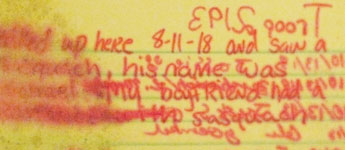 Water Soluble Ink
Water Soluble InkNote that some writing is mirror image. This page got wet and writing on both sides bled through, rendering some writing nearly illegible due to double image. To the left, writing is more illegible because the page was wet longer and the ink bled until the lines were totally out of focus. Also, there is some light mildew staining.
 Water Dissolved Ink, Mildew, Torn Cover
Water Dissolved Ink, Mildew, Torn CoverThe red, water soluble ink is mostly illegible, while the black, oil ink is well preserved. Writing in pencil is very light but still sharp and legible with enough light. The page is mildewing, and the cover is torn where the water weakened the binding.
Although the shown cover is only partly torn away due to water damage, in some cases helically wound wire bound covers are ripped away probably due to careless handling. They are usually stored with the rest of the notebook.
